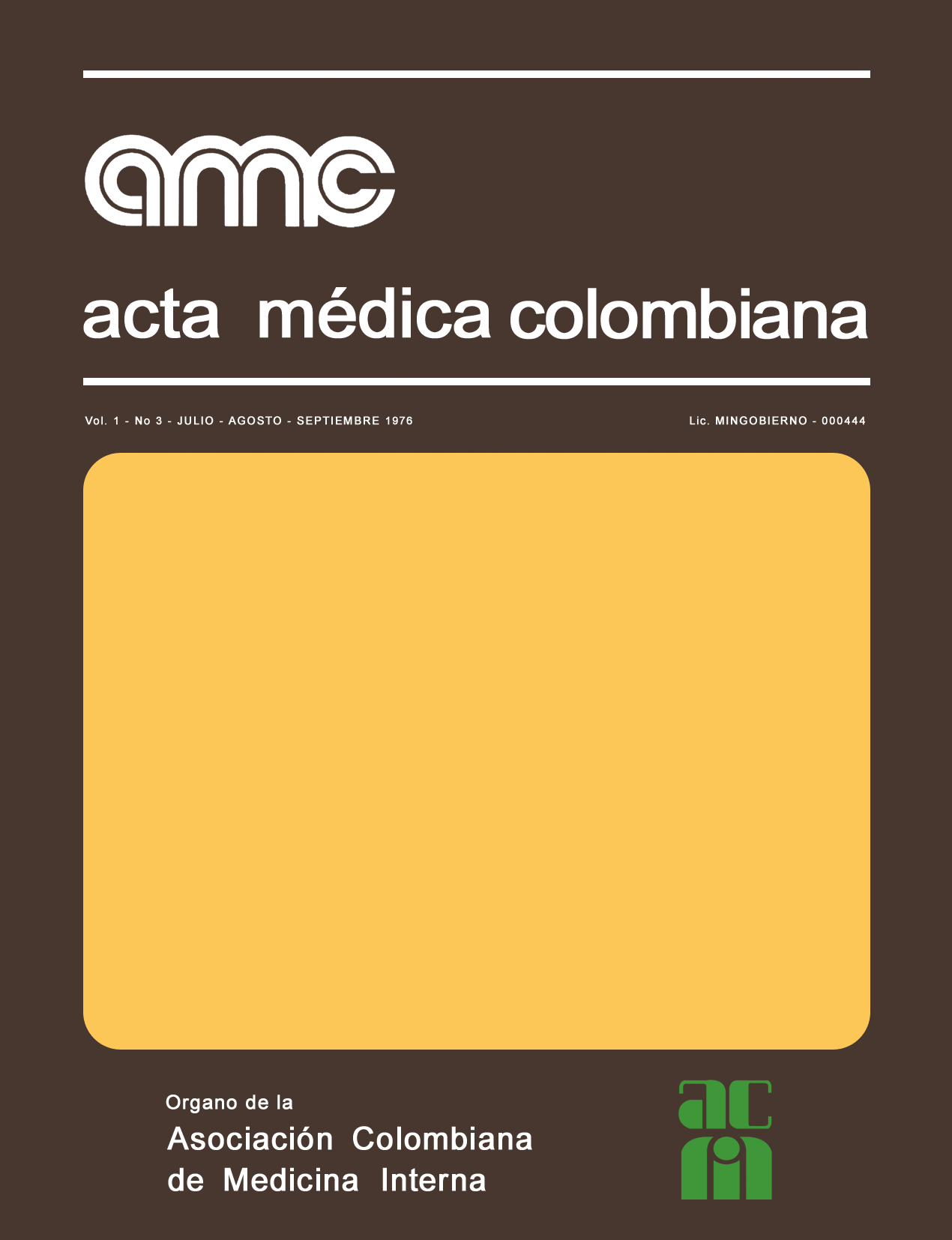NUTRICION Y ESPRUE
Abstract
General comments are done about the sprue modalities and clinical similitude between tropical sprue and chronic malnutrition is underlined. Sixteen adult patients with chronic malnutrition were studied, so as to investigate if it produces malabsorption and intestinal atrophy and to precise its relation with "tropical sprue". With that purpose, the nutitional state of the patients was quantified through the alimentary history, physical examination and laboratory tests. Their intestinal absorption and morphology of the jejunal mucosa were also studied.
Seven patients were found with an intestinal mucosa pattern, either normal or with nonspecific changes and the absorption tests showed just one individual with significant steatorrhea that disappeared once treated his massive infestation of Giardia Lamblia.
In nine patients the tests showed malabsorption and atrophy of the intestinal mucosa, four of them had megaloblastic anemia. Those without megaloblastic anemia were treated stepwise with different schemes: 1well balanced diet, 2balanced diet and oral folic acid, 3diet plus vitamin B12 and 4diet plus oral tetracycline. With balanced diet as unique therapy, the clinical response was favorable but the absorption tests and the intestinal morphology did not improve during several months of treatment.
When adding folic acid orally or vitamin B12 parenterally, there was some improvement in absorption tests but no modification was observed in the intestinal morphology. Adding tetracycline, elicited important improvement in the intestinal morphology, 8 weeks later.
Those patients with megaloblastic anemia were treated with a combined therapy consisting of balanced diet, oral folic acid, parenteral vitamin B12 and oral tetracycline, which gave an excellent clinical and hematological response, with improvement in both the absorption tests and the intestinal morphology in 6 weeks of treatment.
A patient with malabsorption and intestinal atrophy who had no evidence of megaloblastic anemia initially, came back to the hospital two years later showing at this time the same clinical picture combined now with megaloblastosis.
We postulate that malnutrition per se is not a cause of either malabsorption or intestinal atrophy. When these two findings are prominent, they are probably due to an alteration in the intestinal flora, since improvement was evident when adding tetracycline. Spaced doses of vitamin B12 as given in Schilling tests do not interfere significantly the intestinal mucosa pattern and the presence of megaloblastic is not essential to establish the diagnosis of tropical sprue.
Chronic colonization by coliform bacteria is probably the main cause of intestinal dysfunction labelled as "subclinical malabsorption", "tropical enteropathy" or "tropical sprue" and makes urgent the achievement of environment sanitation in our country.
The 16 patients studied were finally classified as: 7 cases of chronic primary malnutrition and 9 cases of tropical sprue (with or without megaloblastic anemia).
The results of the treatment schemes obtained in patients with intestinal atrophy suggest that the ideal management of tropical sprue is a combined therapy consisting of tetracycline, vitamin B12 and folic acid.
Metrics
Acta Medica Colombiana uses the CC-BY 4.0 license. Authors retain all rights over their work.


